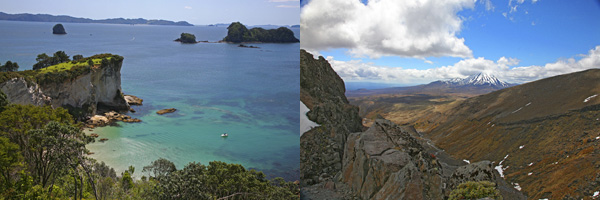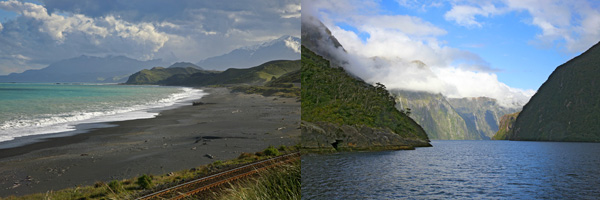





New Zealand: A Wine & Scenery Epilogue
Written By: SUSANNE LOMATCH
We’ll never forget NZ. On the high side, we experienced some of the best wines,
winemakers, scenery and outdoor activities anywhere, all in such relative proximity.
Caravanning is the most economical and flexible way to navigate through it, and we truly
appreciated NZ’s popular support for caravan goers, as evidenced by the plethora of
caravan parks and amenities in almost every little town. The abundance of exceptional
wines and extraordinary fresh food (such as NZ meats, fish, fruits and cheeses!) provides
a gastronomic delight for the caravan chefs among us. On the low side, NZ needs to work
on the quality of restaurant food and service, and more generally, customer service. This
appears to be one uninherited trait from NZ’s British heritage. Maybe when we return for
another visit we’ll find a capitalist revival of sorts.
 If you’re like us, you will accumulate more wine during your trip than you can drink, or
special wine that you will want to cellar for a few years. Between airline baggage
restrictions and the import duty, the best option if you have wine exceeding a case worth
(we had two cases and then some) is to ship via a licensed wine exporter. After extensive
searching we found only one, located in Marlborough: MWT Wine Export. So why, you
may ask, didn’t we just ship the cases back to ourselves via an international shipper? The
answer is unnecessarily complicated. U.S. import (customs) regulations are the thorn, not
NZ export regulations. To ship alcohol into the U.S., an authorized customs agent or
importer must receive the shipment. MWT Wine Export just happens to have a business
relationship with such an import agent. And there are overhead costs, in addition to
import duties and straight shipping charges. Luckily we were charged a flat rate by the
case, NZ$270, a decent deal during our short period of relative US dollar strength. The
few extra bottles we had left were stuffed in our luggage, but gone are the days when one
can get away with carrying back a whole case with no extra charges, as we did from
Australia in 2002.
If you’re like us, you will accumulate more wine during your trip than you can drink, or
special wine that you will want to cellar for a few years. Between airline baggage
restrictions and the import duty, the best option if you have wine exceeding a case worth
(we had two cases and then some) is to ship via a licensed wine exporter. After extensive
searching we found only one, located in Marlborough: MWT Wine Export. So why, you
may ask, didn’t we just ship the cases back to ourselves via an international shipper? The
answer is unnecessarily complicated. U.S. import (customs) regulations are the thorn, not
NZ export regulations. To ship alcohol into the U.S., an authorized customs agent or
importer must receive the shipment. MWT Wine Export just happens to have a business
relationship with such an import agent. And there are overhead costs, in addition to
import duties and straight shipping charges. Luckily we were charged a flat rate by the
case, NZ$270, a decent deal during our short period of relative US dollar strength. The
few extra bottles we had left were stuffed in our luggage, but gone are the days when one
can get away with carrying back a whole case with no extra charges, as we did from
Australia in 2002.
And now for our wine and scenery favorites (may they be yours as well):
 Martinborough on the North Island was both a revelation and a delight for its wine prowess. Let’s
just say we drop dead for the Pinots (both Noir and Gris) that we tasted here. They are
serious and weighty, if not truly multidimensional. Most people only visit Marlborough
on the SI, and we think that is a great oversight. Give yourself the extra time to go to all
four major wine regions (Hawkes Bay, Martinborough, Marlborough, Central Otago) covered on pages 6, 7, 8 and 12 in
the adjoining travelogue, and
as to which you’d
vote a best of. Though New Zealand is known primarily for Sauvignon Blanc, we tasted over 50
here and passed on most of them. Part of the problem is that these wines are best tasted
and sipped very cold, and many wineries do not chill them enough for a tasting. That
said, the majority we passed on, or another way to say it: we simply couldn’t get past the
ubiquitous and over-emphasized capsicum (green pepper).
Martinborough on the North Island was both a revelation and a delight for its wine prowess. Let’s
just say we drop dead for the Pinots (both Noir and Gris) that we tasted here. They are
serious and weighty, if not truly multidimensional. Most people only visit Marlborough
on the SI, and we think that is a great oversight. Give yourself the extra time to go to all
four major wine regions (Hawkes Bay, Martinborough, Marlborough, Central Otago) covered on pages 6, 7, 8 and 12 in
the adjoining travelogue, and
as to which you’d
vote a best of. Though New Zealand is known primarily for Sauvignon Blanc, we tasted over 50
here and passed on most of them. Part of the problem is that these wines are best tasted
and sipped very cold, and many wineries do not chill them enough for a tasting. That
said, the majority we passed on, or another way to say it: we simply couldn’t get past the
ubiquitous and over-emphasized capsicum (green pepper).
As for scenery, Tongariro N.P. and Cathedral Cove on the North Island and Kaikoura and Milford Sound on the South Island
are hard to beat. Click HERE for a travelogue photography slideshow. Once again, shoot us a note or leave a comment on your favorites, and
why, and we'll post throughtful comments. My why will be different than your why, but inspirational mood rousing sums it up
for me. Happy travels.